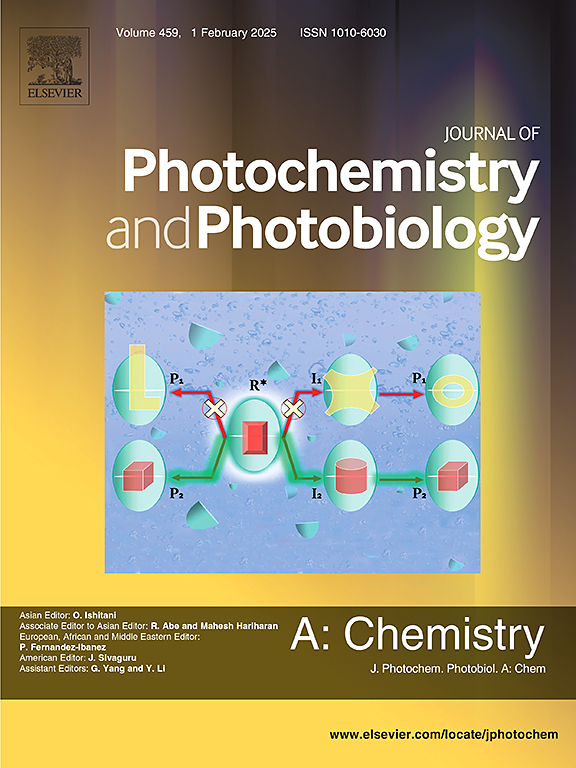Primary intermediate identified during heterogeneous photolysis of acid Orange 7
IF 4.1
3区 化学
Q2 CHEMISTRY, PHYSICAL
Journal of Photochemistry and Photobiology A-chemistry
Pub Date : 2025-07-01
DOI:10.1016/j.jphotochem.2025.116591
引用次数: 0
Abstract
Acid Orange 7 was photocatalytically degraded in a titanium dioxide slurry using oxygen bubbling and polychromatic radiation from a high-pressure Hg lamp in a back-flow tubular photoreactor. The dye was dissolved in buffers based on aqueous sodium carbonate (pH 10), sodium hydroxide (pH 10), or hydrochloric acid (pH 4). Reaction products were analyzed by NMR and MS spectroscopy as well as HPLC.
A previously undescribed primary intermediate, 3-hydroxy-4-[(2-hydroxy-1-naphthyl)diazenyl]benzenesulfonic acid, was detected and isolated on a preparative scale from the photoreactor. The identity of the photolysis product was confirmed by comparison with a chemically synthesized standard.
The kinetics of the heterogeneous photolysis of Acid Orange 7 was also investigated.

酸性橙7非均相光解过程中鉴定的初级中间体
在回流管式光反应器中,利用氧气鼓泡和高压汞灯的多色辐射,在二氧化钛浆中光催化降解酸性橙7。染料溶解在以碳酸钠(pH 10)、氢氧化钠(pH 10)或盐酸(pH 4)为基础的缓冲液中。反应产物经核磁共振、质谱及高效液相色谱分析。一种先前未被描述的一级中间体,3-羟基-4-[(2-羟基-1-萘基)二氮基]苯磺酸,在光反应器中被检测和分离。通过与化学合成标准品的比较,确定了光解产物的性质。研究了酸橙7的非均相光解动力学。
本文章由计算机程序翻译,如有差异,请以英文原文为准。
求助全文
约1分钟内获得全文
求助全文
来源期刊
CiteScore
7.90
自引率
7.00%
发文量
580
审稿时长
48 days
期刊介绍:
JPPA publishes the results of fundamental studies on all aspects of chemical phenomena induced by interactions between light and molecules/matter of all kinds.
All systems capable of being described at the molecular or integrated multimolecular level are appropriate for the journal. This includes all molecular chemical species as well as biomolecular, supramolecular, polymer and other macromolecular systems, as well as solid state photochemistry. In addition, the journal publishes studies of semiconductor and other photoactive organic and inorganic materials, photocatalysis (organic, inorganic, supramolecular and superconductor).
The scope includes condensed and gas phase photochemistry, as well as synchrotron radiation chemistry. A broad range of processes and techniques in photochemistry are covered such as light induced energy, electron and proton transfer; nonlinear photochemical behavior; mechanistic investigation of photochemical reactions and identification of the products of photochemical reactions; quantum yield determinations and measurements of rate constants for primary and secondary photochemical processes; steady-state and time-resolved emission, ultrafast spectroscopic methods, single molecule spectroscopy, time resolved X-ray diffraction, luminescence microscopy, and scattering spectroscopy applied to photochemistry. Papers in emerging and applied areas such as luminescent sensors, electroluminescence, solar energy conversion, atmospheric photochemistry, environmental remediation, and related photocatalytic chemistry are also welcome.

 求助内容:
求助内容: 应助结果提醒方式:
应助结果提醒方式:


